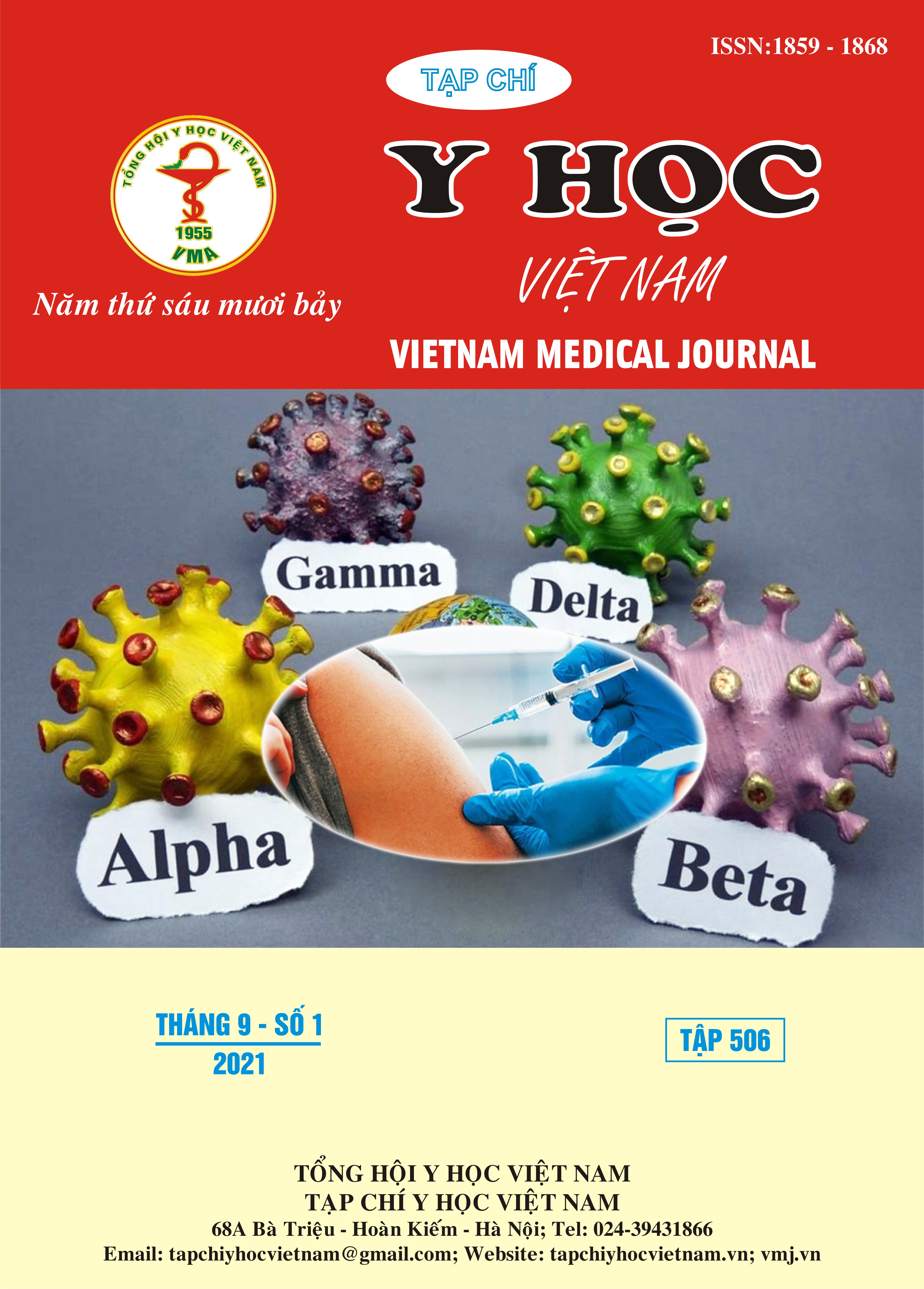THE CLINICAL FEATURES AND THE ANTIBIOTIC RESISTANCE OF BACTERIA CAUSING IMPETIGO AT CAN THO HOSPITAL CITY OF DERMATO-VENEREOLOGY
Main Article Content
Abstract
Objective: To demonstrate clinical features and antibiotic resistance of bacteria causing impetigo in patients at Can Tho city Hospital of Dermato-Venereology from June 2020 to December 2020. Materials and methods: A descriptive cross-sectional study of 55 patients, clinical characteristics of patients with impetigo were recorded. Bacteria from impetigo pus were isolated. Antiobiogram examination with multiple antibiotics was performed. Results: 35 (63,6%) patients with impetigo had positive bacteriological cultures. Regarding clinical features, non-bullous impetigo was 61,8%, bullous impetigo was 25,5% and ecthyma was 12,7%. On the examination of biology features, S. aureus was 93.8% of cases. Penicillin-resistant S.aureus and erythromycin-resistant S.aureus was 100%; amoxicillin/acid clavulanic-resistant S. aureus was 93,5%; bacteria were sensitive to cefuroxime, oxacillin, tetracyclin, ciprofloxacin, levofloxacin, linezolid and vancomycin; the 3 case vancomycin-resistant was ecthyma. Methicillin-Resistant Staphylococcus aureus (MRSA) was 87,1%.And 2 S.pyogenes cases (8,6%) remained susceptible to penicillin. Conclusion: Non-bullous impetigo was the most common clinical feature. The main bacterium is S.aureus, which was completely resistant to penicillin and erythromycin. On the other hand, it was still highly sensitive to oxacillin,cefuroxime, and vancomycin.
Article Details
Keywords
Impetigo, antiobiotics resistance, S.aureus, S. pyogenes
References
2. Đỗ Thị Thúy Nga (2011), "Tiêu chuẩn đọc kết quả kháng sinh đồ và MIC", Qui trình thao tác chuẩn về thử nghiệm tính nhạy cảm kháng sinh (21),
3. Trần Nguyên Ánh Tú (2016), "Tình trạng kháng thuốc in vitro của Staphyloccocus aureus và Streptococcus pyogennes gây bệnh chốc ở trẻ em đến khám tại Bệnh viện Da liễu thành phố Hồ Chí Minh", Tạp chí Y học Thành Phố Hồ Chí Minh, 20(2), tr.63-69.
4. Cole C. & Gazewood J. (2007), "Diagnosis and treatment of impetigo ", Am Fam Physician 75(6), pp.859-864.
5. James G.H. Dinulos (2020), "Impetigo", Habif's Clinical Dermatology: A Color Guide in Diagnosis and Therapy, Elsevier, pp. 331-340.
6. Vohra H Kumar R, Chakraborty A, et al (2009), "Epidemiology of group A streptococcal pharyngitis &impetigo: a cross-sectional & follow up study in a ruralcommunity of northern India", The Indian journal of medicalresearch,130(6), pp. 765-771.
7. Kong F Liu Y, Zhang X, et al (2009), "Antimicrobial susceptibility of Staphylococcus aureus isolated from children with impetigo in China from 2003 to 2007 shows communityassociated methicillin-resistant Staphylococcus aureus to be uncommon and heterogeneous", The British journal of dermatology,161(6), pp. 1347-1350.
8. Heilmann KP Richter SS, Beekmann SS (2015), "Macrolide-resistant Streptococcus pyogenes in the UnitedStates, 2012-2013", Clinical Infection Diseases,41(1), pp. 599 - 608.


